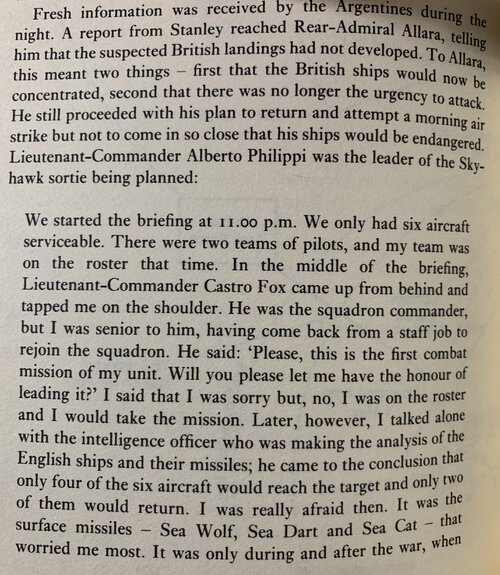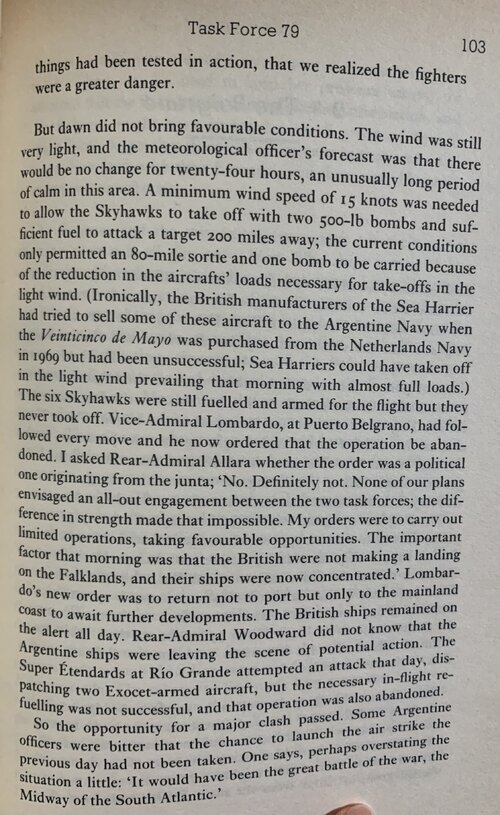While the British Task Force had been detected by a Tracker from 25th de mayo on the afternoon of the 1st May its position was not entirely clear to the Argentinians. And that that point the TF was outwith range of the A4Q. Add to that the aircraft were not equipped for a night attack. So the attack was planned for first light on 2 May 1982 with launch at 0600 while the carrier closed the distance overnight.
The plan was that each of the 6 A4Q launched was to carry 4x500lb bombs. The probabilities were then that 4 would get to a bomb dropping position, losing 2 on the ingress. Of the 16 bombs dropped 4 (25%) would hit their intended targets - the RN carriers. It was expected that they would lose another 2 aircraft during the egress. So a loss of 4 aircraft for 4 bomb hits.
Unseasonably low winds and 25th de Mayo being limited to 20 knots messed up the plan on 2nd May. The wind was only blowing 10 knots. The A4Q required 40 knots WOD to lift the planned load. So the planned bomb loads had to be reduced, first to 3 and then 2x500lb bombs.
That changed to odds of a success. Then the probabilities said only 2 bombs could be expected to strike the target for the loss of 4 aircraft. That was then considered not worthwhile. So the strike was scrubbed.


